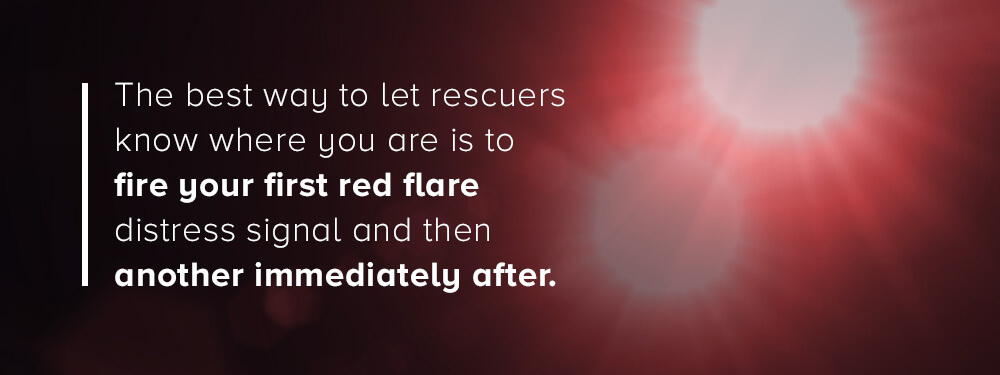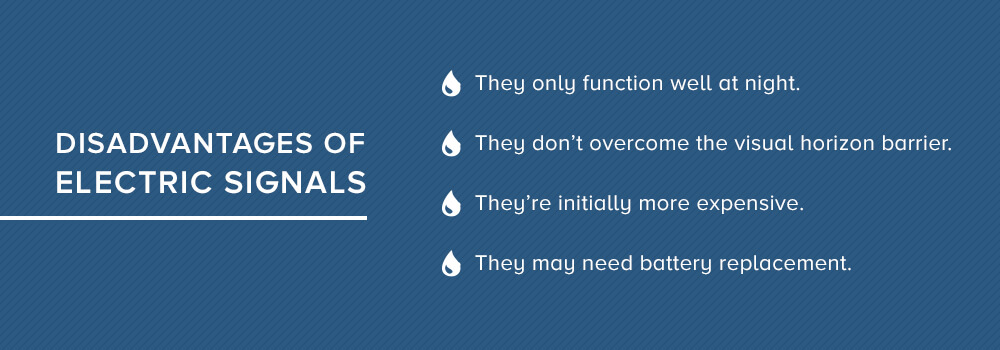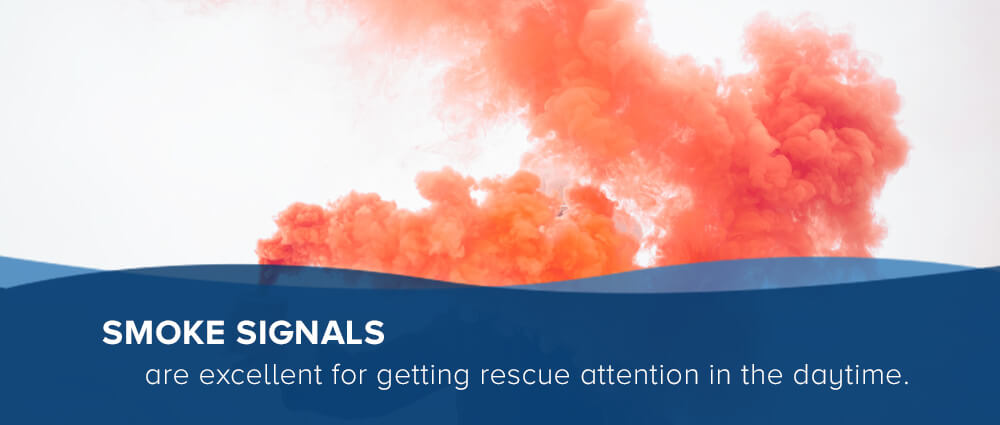While recreational boating is all about fun, safety is always the priority. And in case of an emergency, you want to know what to do beforehand so that you don’t lose valuable time.
Here at Formula Boats, we’re committed to providing our customers with only the best and safest boating equipment — but that doesn’t replace the need to prepare for unexpected situations. Whether you’re a new boater or a seasoned pro, everyone needs to have the proper distress signaling equipment on board.
While the likelihood of needing to use your distress equipment is low, it’s always best to be prepared.
We want our customers to be properly equipped so they can push fun to the limit without worry. So in this guide to marine distress signals, we’ll go over:
- USCG Safety Regulations
- Types of Signals and Their Meanings
- When to Use Distress Signals
- How to Give a Mayday Distress Call
USCG Safety Regulations
The regulations in this guide are for recreational boaters. There are more strict visual distress signal requirements for larger vessels and commercial operations.
Title 46 of the Code of Federal Regulations — the rulebook used by the United States Coast Guard — outlines the safety requirements for boaters on lakes and coastal waters. If a body of water is more than two miles wide or defined as Coastal Waters or a Great Lake, you must carry visual distress signal equipment. This was first made into law in 1991 to ensure boater safety.
There are some exceptions. During daytime hours, there are situations where you do not need to worry about having visual distress signals:
- If you’re in a vessel less than 16 feet long
- If you’re in an organized event like a race or parade
- If you’re operating a sailboat under 26 feet long not equipped with a motor
- If you’re operating a manually propelled vessel like a rowboat or kayak
During nighttime hours, every boat must have the appropriate visual signaling equipment. Whether it’s for emergencies or to signal to other vessels, it’s always a good idea to carry distress signals, even if not legally required.
There are specific types of distress signals you need for recreational boats. Any distress signals that you bring aboard need to be Coast Guard-approved. The Coast Guard has signals that they classify as daytime or nighttime signals, so be sure to get signals for both.
You may choose a combination of distress signals options, as long as they satisfy the requirements for your type of boat.
If you choose to get pyrotechnic signals like marine flares, you’ll need three that can function in the daytime and three that can function at night for a total of six — or you can buy three pyrotechnics that work in the daytime or nighttime. If you decide to get non-pyrotechnic signals instead, you’ll only need one that works in the daytime and one that works at night.
You can find more information about specific USCG requirements for recreational boaters here.
Types of DistressSignals and Their Meanings
Distress signals come in two general categories — pyrotechnics and non-pyrotechnics.
1. PYROTECHNIC DISTRESS SIGNALS
As their name suggests, pyrotechnic signals create a chemical reaction that produces a flame or other exothermic signals such as light, smoke or sound. Some common types include parachute flares, hand-held flares and floating smoke signals.
All pyrotechnic signaling devices must be within their usable date range and easily accessible to meet Coast Guard requirements. It’s a good idea to carry your expired pyrotechnics as backups, but they won’t be sufficient if you get inspected by Coast Guard officials. All Coast Guard-approved pyrotechnics have a 42-month expiration date from the time of their production.
Alert signals such as aerial flares let rescuers initially find where you are. They travel high into the air so that rescuers can establish your general location if you are beyond the visible horizon. The standard Coast Guard-approved flares reach heights of 375 to 500 feet and burn for about eight seconds.

The best way to let rescuers know where you are is to fire your first red flare distress signal and then another immediately after — this lets them spot your first flare and then establish a better heading to your position with the second one.
Locate signals help rescuers home in on your position once they’re able to see you. Signaling devices like hand-held flares burn for up to two minutes. Smoke flares are useful in the daytime and are an excellent way to help aerial rescuers find your vessel. They float on the water and release a dense orange smoke for about three to four minutes.
Depending on the height of the observer on a boat, the horizon will hide another vessel until it’s about three to five miles away. Because you’re always moving when you’re on the water, you’ll want to make sure you have enough signals to last for a long time.
Even if a rescuer sees you once, they may still need more visual cues to help them find you. For example, if a rescuer is five miles away and traveling at 20 miles per hour, it’ll take them 15 minutes to get to you — prepare to have several minutes’ worth of signals.
SOLAS PYROTECHNIC DISTRESS SIGNALS
Safety of Life at Sea (SOLAS) is an international safety organization, and their standards are more strict than those of the U.S. Coast Guard. Therefore, their distress signals are a step up from those required by the Coast Guard.
SOLAS parachute flares shoot up to double the height of traditional flares and burn at a brightness of 30,000 candelas for up to 40 seconds. SOLAS hand-held flares are waterproof and are about eight times brighter than those required by the Coast Guard. They burn for about one minute and don’t produce the potentially dangerous molten material that can release from traditional flares. They’re designed this way to be safely usable from within a life raft.
As long as you’re operating within 50 miles offshore, you aren’t legally required to carry SOLAS flares, but many recreational boaters consider SOLAS equipment a good investment because it’s better in an emergency.
2. NON-PYROTECHNIC DISTRESS SIGNALS
Non-pyrotechnic signaling devices last much longer than pyrotechnics and provide prolonged signals for rescuers. They are popular among some boaters because they don’t have expiration dates and don’t pose the dangers of traditional pyrotechnics.

While electric distress signals have a lot of advantages, they also have some disadvantages:
- They only function well at night.
- They don’t overcome the visual horizon barrier.
- They’re initially more expensive.
- They may need battery replacement.
Electric signals may also not be as noticeable as traditional flares, so combining the two is best. You don’t want to be in a rescue situation and wish you had better equipment. Over-prepare and you’ll be happy you did.
There are many other kinds of non-pyrotechnic distress signals as well. They include:
- Marker dyes: These devices release colored dye into the water around your boat to draw attention from aerial rescuers. They can cover an area of up to 150 square feet.
- SOS distress light: The world-known distress signal can be signaled with light or sounded on radio equipment, your ship’s horn or other devices to attract attention.
- Radio signals: The Global Maritime Distress and Safety System outlines methods for communication distress across medium to very high frequencies.
- Mirrors: Also called a heliograph, this simple survival tool can be surprisingly effective at long distances to attract the attention of rescuers. It’s a foolproof piece of equipment that’s easy to add to your kit.
- Emergency Position Indicating Radio Beacon (EPIRB): EPIRBs are deployable, waterproof beacons that display a flashing light and have a GPS tracking system to help rescuers find your boat or a person in the water.
- Noisemakers: This could be your boat’s horn or portable air horns. Anything that makes noise is a great way to attract attention and doesn’t rely on visual contact.
- Creative signals: Do anything you can to attract attention to yourself in an emergency as long as it won’t put your vessel in more jeopardy. The easier you can be found, the better.
It’s always a good idea to bring more distress equipment than you need. We recommend that you double the minimum required number for all distress signals.

Of course, it’s best to stay out of a situation that would require distress signals. Here are a few things you can do to avoid an emergency situation:
- Carry a very high frequency (VHF) marine radio.
- Check your boat’s vital systems before getting underway.
- Make sure you have enough fuel for your day or if your plans change.
- Note that you may not have cell service, so figure out the appropriate VHF channels before leaving the harbor.
- Bring GPS systems and marine charts in case of system failures.
- Know basic navigational techniques.
- Keep non-emergency signals aboard to alert other boaters of your operations — like diving or watersports.

When to Use Distress Signals

People sometimes hesitate to use their distress signaling equipment because they’re hoping to avoid going through being rescued. That’s not to say you should fire off a few flares at the first sign of a mechanical failure, but the earlier you can identify that you’ll need to use a signal, the better. Time is valuable when you’re waiting to be rescued.
Assess the situation and use your signals accordingly. There’s no need to fire off all your flares if a rescue vessel already knows where you are and is on the way. On the other hand, don’t hesitate to use more extreme signals if they will help you get rescued faster.
Pyrotechnics are usually the go-to choice because they’re inexpensive and effective. However, they can only be used once, which can limit your chances of being found. Also, you must be careful when using pyrotechnics — be sure to have handing equipment like thick gloves nearby and remember always to use them downwind and away from passengers.
Pyrotechnics produce either a flame or some type of burning signal that can produce ash and slag, so only use them away from other materials that could ignite and cause a fire. You should treat hand-held devices such as flareguns or meteors as you would any other firearm — they’re extremely powerful and can cause serious injury if misused. Always store flare guns where kids won’t easily find them.
Make sure that your pyrotechnics aren’t expired before heading out. Before buying any pyrotechnic signaling devices, make sure that the Coast Guard approves them for use aboard recreational boats.

How you should use your distress signals and which devices you should use depends on the time of day.
Smoke signals are excellent for getting rescue attention in the daytime. They’re most effective on clear days with light winds, when the smoke will not quickly dissipate and will be visible from a long distance. You may still use pyrotechnics and hand-held flares in the daytime, but they’re most visible at night or in dense fog and restricted-visibility conditions.
One option for a non-pyrotechnic daytime distress signal is a 3-foot by 3-foot orange flag with a black square in the center. It’s not the best for attracting attention and should only be used as an alternative to more extreme methods if your rescue needs aren’t an emergency.
There are other non-emergency flags you can use during the day as well. Boaters will sometimes use flags to signal specific operations and let other boaters around them know what they’re doing. This includes flags like the Alfa “diver down” and Victor “I require assistance.” Depending on what you like to do on your boat, you may want to consider buying the appropriate flags to be safe and ensure you’re Coast Guard-compliant.
If you see someone else’s distress signal, you should attempt to assist. Use Channel 16 to notify the Coast Guard of the vessel in distress and make sure they’re aware of the situation and the position of the signaling boat.
Be careful when assisting the vessel in need, so you don’t compromise your boat and your safety. You don’t want to risk damaging your boat and having two vessels in distress instead of one. The Federal Boat Safety Act of 1971 was designed to protect boaters from legal consequences if they prudently decide to assist or not assist a boat in need to ensure the greatest safety.
How to Give a Mayday Distress Call
Emergency situations can occur on your boat that require immediate assistance. Learning how to give a distress call from a boat is a crucial part of boating safety. An efficient and prompt method to contacting someone for help is through VHF radio.
A VHF radio is an essential safety tool that should be on every boat, especially if you often travel far from the shore. This radio is much more useful than a cellphone will be when you’re in an emergency situation. The VHF radio will call and forward your location and identification to the local Coast Guard so they can quickly locate and help you. A cellphone may not have a signal when you’re out on the water, and it does not deliver the same critical information a VHF radio will.
You can deliver three types of messages on a VHF radio to signal distress. These signals include Mayday, Pan-Pan and Securite. Mayday will signal to the Coast Guard that the most urgent response is needed. This includes a life-threatening situation, or the boat is in imminent danger. Pan-Pan will signal urgent information that isn’t life-threatening. Securite is a safety signal you can use to communicate extreme weather conditions or a large boat traveling through a narrow channel.
If a boat emergency arises and you need to signal for immediate assistance, here is how to properly execute a Mayday distress call from VHF radio with proper marine emergency radio call procedure:
Find the Distress button on the radio. If your radio doesn’t have a Distress button, tune to channel 16.
Lift the cover of the Distress button.
Push and hold the Distress button until the radio begins to beep. You have now signaled information to the local Coast Guard.
Choose the reason for the Mayday call if the VHF radio allows this menu option.
State clearly and loudly, “Mayday, Mayday, Mayday. This is [boat name].”
Repeat this phrase three times.
Say Mayday and the boat’s name again.
State your MMSI, the nature of the distress and your position. Provide your location in latitude and longitude. If you don’t know your coordinates, give an estimated distance or a landmark that’s easily identifiable.
Give details about the appearance of your boat.
State how many people are on board.
Give details about the nature of the distress.
If you fear the boat is sinking, indicate how much time you estimate is left until it’s fully submerged.
After you’ve completed this process, say “Over” and wait for a response. Wait for around one minute before you repeat the Mayday call.

Formula Boats for Safety
Here at Formula, safety is our priority. We design our boats to maximize performance and functionality and to protect you and your passengers.
Family-owned since 1976, we take personal pride in making boats that are not only world-renowned for their beautiful styling and performance but exceed standards for reliability. One reason why we’ve become the preferred choice in recreational performance boats is our commitment to our customers and quality design. We don’t make boats for the masses — we make boats for you.
If you have any questions about any of our models or would like to speak to a representative, please give us a call or send a message. We’d love to hear from you.
